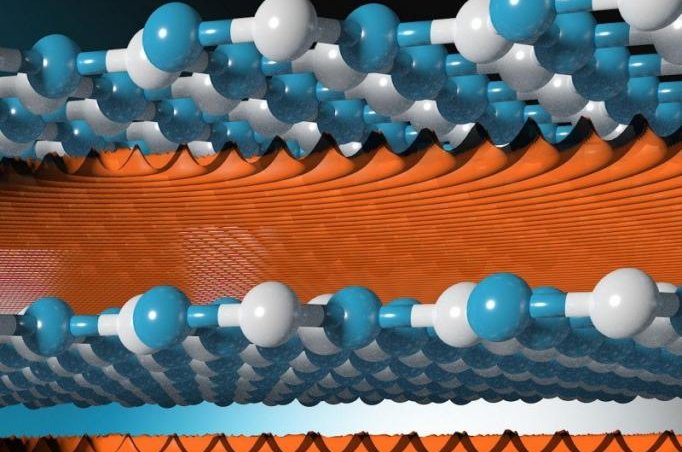The gap between the 2D layers in metamaterials like hexagonal boron nitride or molybdenum disulphide is fine enough to separate hydrogen isotopes. Photo by University of Manchester
March 20 (UPI) -- Scientists have found a way to turn 2D materials into a sieve capable of separating different atoms from each other.
When pushed through the tiny gap between the layers of 2D materials like hexagonal boron nitride or molybdenum disulphide, the atoms of two different hydrogen isotopes can be separated.
Like graphene, hexagonal boron nitride or molybdenum disulphide form sheet-like layers the width of a single atom. The 2D layers feature unique structural patterns, each with different physical and chemical properties. The layers can be stacked to created unique metamaterials.
Until now, scientists didn't know tiny gaps exist between layers of 2D materials. Advanced imaging techniques revealed the gap, and experiments showed the gap can work like a sieve -- the smallest sieve ever.
Various processes in nuclear, medical and other research fields call for the separation of isotopes, a typically energy-intensive task. From the perspective of classical physics, hydrogen isotopes appear identical. But when their quantum nature is considered, their wave signatures are distinct.
Deuterium features a shorter wavelength than hydrogen, allowing it to be separated through a technique known as quantum sieving. Normally, quantum sieving requires extremely low temperatures.
At room temperature, the separation of distinct atomic wave patterns requires an extremely fine sieve. Until now, scientists were unable to create such a fine sieve.
"Quantum phenomena are very rare at room temperature," Sheng Hu, a researcher at the University of Manchester, said in a news release. "To observe matter waves it is normally necessary to fabricate sophisticated contraptions such as magneto-optical traps or go to cryogenic temperatures. We demonstrate an experimental setup that allows us to see these exotic quantum phenomena at room temperature."
Because deuterium has a shorter wavelength, it slips through the tiny gaps in between the 2D layers, separating from hydrogen.
The breakthrough -- detailed this week in the journal Nature Nanotechnology -- could allow researchers to separate isotopes more efficiently, as well as offer new insights into the nature of quantum particles.















